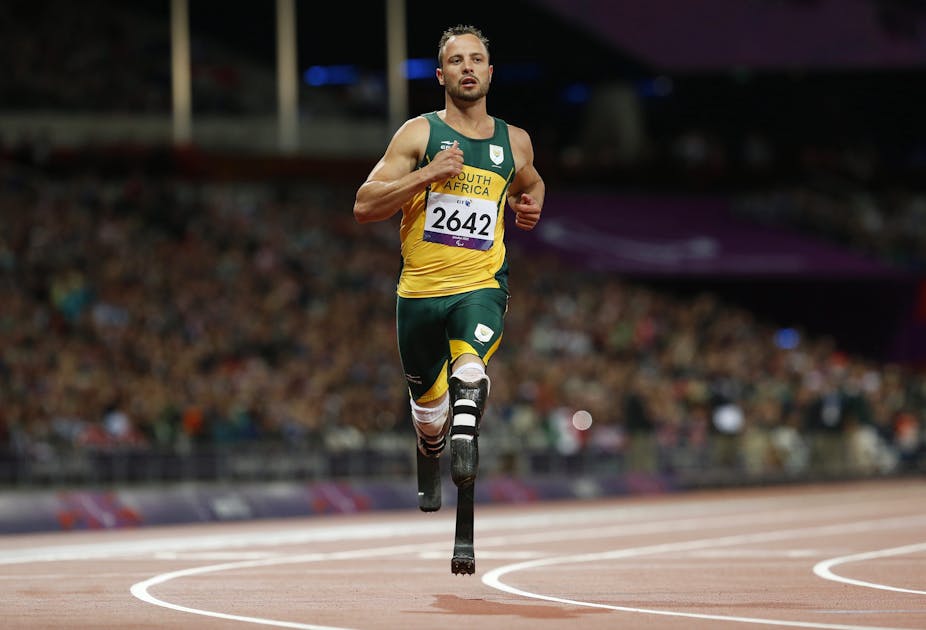There has been a considerable amount of media coverage surrounding South African amputee sprinter Oscar Pistorius who competed at the London Olympics and is now competing at the London Paralympics.
The coverage continued when, on August 2, Pistorius started the men’s 200m-T44 as favourite – having dominated the event since 2004 – only to be beaten to the line by Brazilian Alan Oliveira.
The result sparked a stunned and unsporting reaction from Pistorius who suggested Oliveira had broken the rules by wearing prosthetic legs that were too long, giving him an unfair advantage.
Overreaction or fair point?
Response to this outburst generally fell into two camps: those who saw Oscar’s outburst as unsporting and those who sided with Oscar and questioned the International Paralympic Committee’s (IPC) rules and regulations on the use of prostheses.
In the following days, Pistorius apologised for the timing of his outburst but did not retract his concern. He said he had contacted the IPC before the London Paralympics raising concerns about prosthesis lengths. I am certain the IPC would have looked into these allegations but it is not in their mandate to report directly to individual athlete concerns.
Because he did not get the response he wanted, Pistorius took his complaints directly to the media who have helped him develop the Oscar brand so successfully over the last five years.
The debate as to whether or not Oscar was cheated out of a gold medal in the 200m-T44 event is interesting for sports fans and the media has been all over the story.
But I want to take a step back and explore the rise of the Oscar phenomenon and suggest that, for far too long, Pistorius has been cheating the classification system that is central to the ethos of Paralympic sport.
Banned before, banned again?
In 2007 the International Association of Athletics Federations (IAAF) attempted to ban the type of prosthesis Pistorius uses to run. This push was seen by many as an infringement on the rights of the disabled.
Pistorius himself was vitriolic when the IAAF ban was announced, saying that such a stance would be counterproductive to the advancement of Paralympic sport. It certainly could have negatively impacted upon the Oscar brand, but would it really have been bad for the Paralympic movement?
It could be argued that Pistorius – and those impaired in a similar manner such as Oliveira – should not be competing in the London Paralympic Games because to do so is unfair on the majority of athletes in their events.
The simple fact is that double below-the-knee amputees – such as Pistorius – have an unfair advantage over single below-the-knee amputees – the majority of Oscar’s competitors.
An artificial advantage
The outburst that started this recent debate was about the length of Oliveria’s blades. The IPC says that these blades are legal but to my mind the issue is all about balance.
According to the IPC, Pistorius is a class T43 athlete (T stands for track, the 4 represents the athletes impairment category – amputee – and the 3 is the athletes specific class – double below-the-knee) which, according to the Athletics Classification Handbook includes:
Double below-the-knee amputees and other athletes that are equivalent to a double below-the-knee amputation.
Many of the athletes that Oscar competes against in Paralympic competitions are single below-the-knee amputees (T44) and as such have difficulty balancing the uneven ground forces between their human leg and the lower-leg prosthesis during running.
T44 athletes generally have better starts than T43 but once underway, the inertia of the balanced blades give the likes of Pistorius and Oliveira a huge advantage over 200m and 400m as the uneven forces of T44 athletes makes them more impaired.
IPC rules state that a less-impaired athlete cannot compete in a class with more impaired athletes because this makes the context inequitable. As counter-intuitive as it might sound, modern technology makes having no lower legs an advantage over having one.
Since there are not enough class T43 athletes running at an elite level (IPC rules state the ranking lists must be ten athletes deep from at least four nations) Pistorius should not be eligible to compete in the Paralympics.
Pistorius isn’t alone …
Many will think this is harsh but there are countless elite athletes with impairments who are not eligible to compete in the Paralympic Games for the same reason - a lack of numbers to produce exciting yet equitable competition.
Since the formation of the Paralympic Games in 1948, athletes with Pistorius’ impairment have competed using wheelchairs. This is partly because the technology available for walking and running was very uncomfortable during training and competition.
There will come a time when there are enough athletes for Pistorius to compete with on a level playing field but that time isn’t now.

